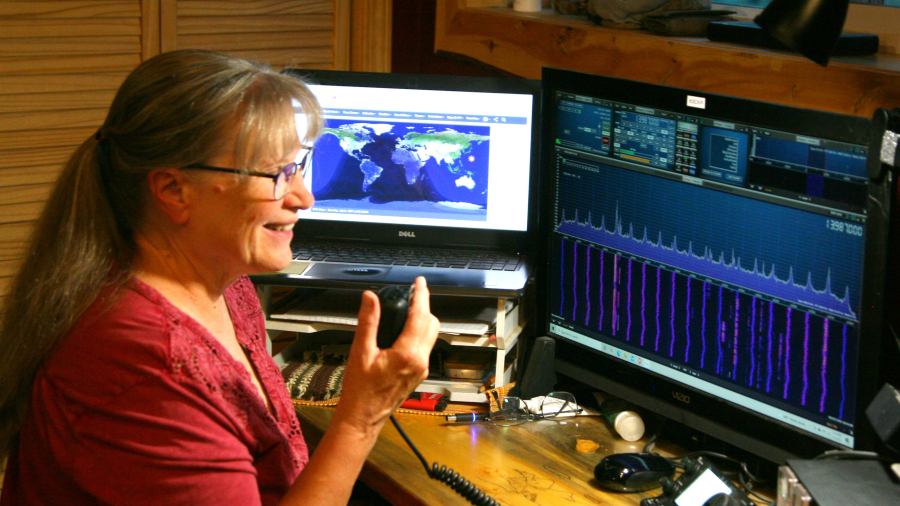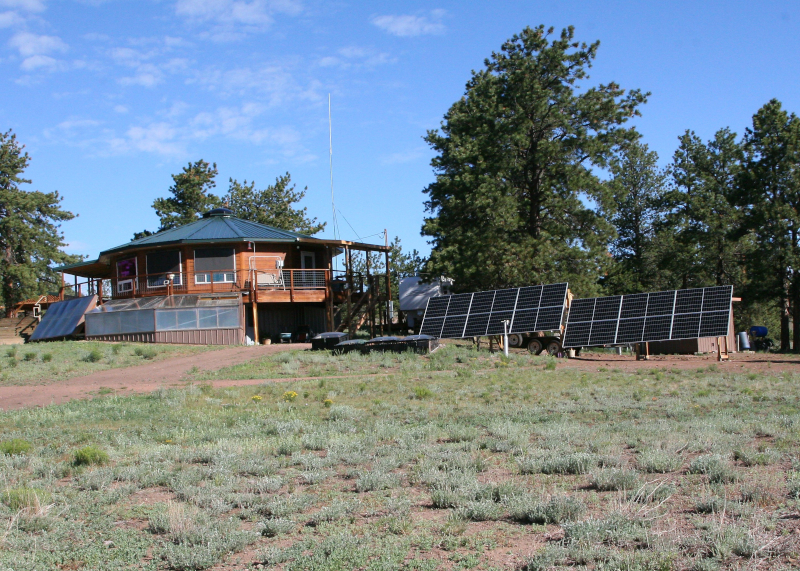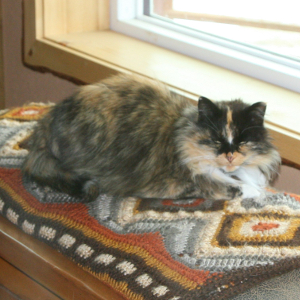
We have recently become Ham Radio Operators, working from our shack here at home. Now that we are off-grid, Tim got to thinking that hams can be very helpful with communications during emergency situations such as wildfires or winter storms. When there is no cell or landline phone capability, no internet and no power, hams can still operate with radio waves as long as they have power. WE’VE GOT POWER when all else fails, and now that we are hams we can communicate with the outside during these emergency situations. To see how hams can help in this way, here’s a video of Walter Cronkite speaking of ham radio’s contributions in a wildfire that was not far from here several years ago.

TIM (KØCKR) was a ham starting in 1979 when he first took the test & got his license. He maintained the license until he let it expire in 2009, when he had no radio and wasn’t interested in sticking with it at that time. He recently decided to renew his license (which required taking a test) and get a radio.
LAURIE (KØLTH) became interested in the hobby as Tim was studying for his test. When I (Laurie) told Tim I was interested, he was quite surprised. He just hadn’t thought I might want to learn all the electronics & radio wave information necessary to operate as a ham. I’ve never done anything like this before, and it was quite a challenge to do the studying in preparation and then take the exams.
For those who don’t know, there are different levels of ham operators. TECHNICIAN is the beginner class: Technicians are only allowed to operate on a small number of very high frequencies. The GENERAL class is the next step up. Generals can operate on many more frequencies, considered “high frequency” radio bands.
Tim and I are both “Generals”. Since Tim had previously been in the 2nd level, he only had to take the Technician exam and was then “grandfathered” in to the General classification. As a new licensee, I had to take both the Technician and General exams. I studied hard and took both tests on the same day. I was very pleased to pass both tests!
Shortly after Tim got his renewed license, we got a radio (transceiver) and antenna and began listening to and transmitting out to some local repeaters. These repeaters are put up by local clubs to help transmit locally. With all the mountains around, line-of-sight transmission is difficult. These repeaters take ham signals and retransmit them all around the local area. It’s kind of like a “party” line. Everyone on the repeater hears what everyone else is saying. We’ve joined one of the local ham radio clubs and have begun meeting a few of the people we are hearing over the repeater. The main topics of discussion for most of these hams are antennas, radios, how strong their signal is, and so on. Some of them do various contests to see how many people they can contact and how far away they are. Some of them participate in climbing to mountain tops and seeing how many people they can reach using line-of-sight, and how far these people can receive their signal.
In addition to local communication, we are now able to receive & transmit all around the world. It’s amazing how these radio waves work! One thing that’s great about our location is that we have plenty of room on our 40 acres for antennas, and no homeowner restrictions to keep us from putting them up. A couple of weeks ago a friend came to help us put up a temporary “dipole” antenna (just a couple of wires strung between two trees and hooked together. This allowed us to hear and communicate with people all over the states, and even Italy and Slovenia!

In the past couple of days Tim and I put up a “horizontal loop” antenna, which is a loop of wire about 300 feet long attached to six of our pine trees. The loop is about 35-40 feet high. This will now allow us to transmit on many more bands, all around the world. It was rather challenging to get it up into the trees that high, but we did it (well, mostly Tim–I helped).


Perhaps in the future there will be more updates on our ham experiences. We look forward to meeting more people and becoming available to help with communications in emergency situations.
**UPDATE!**
In the past few days I (Laurie) have been able to contact six different countries (including U.S.)! I’ve spoken with other hams in Canada, Russia, Spain, Slovak Republic, and Indonesia. Usually they are short conversations with people trying to make several contacts, but some speak at more length than others. Most hams are men, and they are very interested to hear any woman making contact. Women are called “YL” (Young Lady). A common good-bye said by hams is “73”, meaning “best wishes” or “best regards” or something like that. But many will tell me “88”, which means “hugs & kisses” or something along those lines. It’s a kick.
There has also been a contest going on over the 4th of July weekend by the original 13 Colonies. Each of those states tries to make as many contacts as possible, and they are on the air often. They also are glad to hear a “YL” respond!



















